Sturm und Drang mit Tangerine Dream
After a cheery frolic through the worlds of JoJo’s Bizarre Adventure and K-pop, I turn now to something very serious indeed: Tangerine Dream.
For those who haven’t (as I have) made Tangerine Dream their personal religion, they were (at least for the period in which I am interested in them) an electronic rock group. Founded and principally organised by Edgar Froese, Tangerine Dream were stalwarts of the so-called (but not by the participants) Krautrock movement. They formed in Berlin in the late 1960s, and are still a going concern today. In all Tangerine Dream has released in excess of a hundred of studio and concert albums, as well as numerous film soundtracks.
My obsession with Tangerine Dream dates back to my teens, when I heard their earliest 1970s albums, an era which I’m labelling their “classic period”. This survey discusses those albums and Tangerine Dream’s somewhat overlooked place in electronic music history.
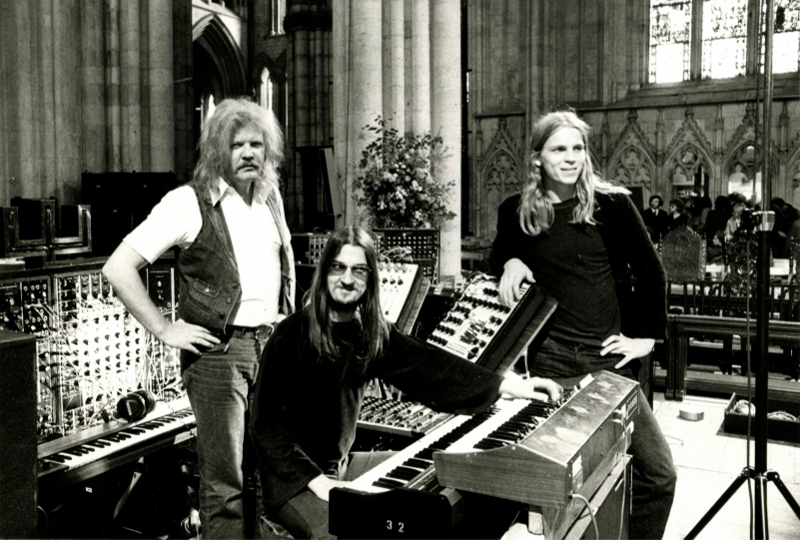
My personal dreamtime
For whatever reason I always found electronic sound interesting, and started actively investigating it from the age of 15. I can’t remember how I learned of Tangerine Dream’s existence. Maybe it was because their CDs frequently turned up in the library category “electronic”. Whatever the reason, I started listening to the group when I was 16, way back in 1992.
In the age of Spotify I can find and listen to Tangerine Dream’s albums in seconds, and consume the albums under discussion in an afternoon, but in the early 90s it wasn’t easy finding relatively obscure German electronica in a small city on the s arse-end of the world. I was also budgetarily constrained, so I couldn’t just order what I wanted on import.
The upshot is that I had to be patient. One thing to be said about this scenario is that it made me continually hungry for music in a way I am not today. It built character, too!
Phaedra
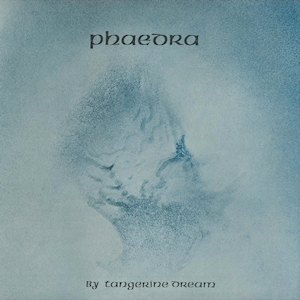
Before Phaedra I’d heard a Tangerine Dream album called Melrose, which came out in 1990, and was sort of pleasant New Age jazz. I liked it enough to dub it, and to seek out. Up to that point electronic music I’d listened to (Vangelis, Jean Michel Jarre), which was orderly and reasonably pleasant. When I got out Tangerine Dream’s 1974 album, Phaedra, I was introduced to electronic music as a stage for examining and experiencing cosmic terror.
Phaedra’s eponymous track dribbles in uneasily out of silence, with a sinister repeating cascade of notes soon dominating. This melodic tumble gradually evolves, becoming faster and losing its tuning (voltage-controlled synthesizers were notorious for this), before expiring into a bleak soundscape haunted by demented howlings.
The rest of the album’s tracks aren’t quite as hypnotically terrifying, but just as impactful. The unsnappily named “Mysterious Semblance at the Strand of Nightmares” sounds like an organist warming up to play at my funeral, while “Movements of a Visionary” is a wondeful meditation that seems to be about both movement and stasis. The short finale, “Sequent C” ends the album on a desolate and cheerless note. The album instantly made a powerful impact on me.
I pored over album’s liner notes. The group’s three members (Chris Franke, Peter Baumann, and founder Froese) all seemed to be playing something called a VCS3, and a device with a name straight out of science fiction: “mellotron”. Finally, Franke played an instrument called a Moog synthesizer. None of this meant anything to me, but it all seemed so obscure and esoteric to me that once more I was deeply impressed.
Phaedra was uncompromising but I over time I grew increasingly attached to it. It might have helped that I was suffering from (in my unprofessional estimation) clinical depression; I was certainly finding the latter half of my teen years quite difficult. I don’t want to over-stress this, as I think most teenagers are on the edge of some mental crisis or another; it’s a pretty trying time for everyone. But I think my personal gloom does explain my attraction to Phaedra: the baleful mood of the album provided me with a kind of solace. (At that time, other kids were deriving the same sort of consolation from Nirvana; oddly, I find Nevermind a much more depressing album than Phaedra. I think it’s because cosmic gloom and alienation is kind of interesting, to me, whereas Cobain’s lyrics and music were so nihilistic it made me miserable to think he could be so closed off from positive emotion. That said I found Robert Smith adorkable, and Morrissey hilarious…)
Zeit
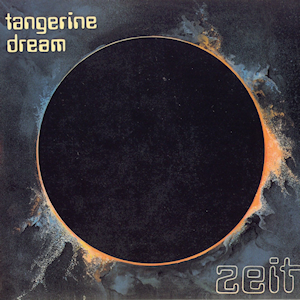
Four months later in August ‘92 that I hit my next Tangerine Dream paydirt: the 1972 double album Zeit on glorious single cassette. (Just in case you weren’t aware, Zeit in German means time). Playing the tape revealed (rather hissily) 70 minutes of stygian mystery, or, as the group pretentiously subtitled it, “a largo in four movements”.
I listened to Zeit for the first time in my bedroom on a winter’s afternoon. Outside it was sunny, clear, bright, but inside my room the tension was building. As the first cello drones of the first track (“Birth of the Liquid Pleiades”, is the un-understated title), my mood was so hyperbolically neurotic that I was convinced the music was going to drive me mad. But I persisted, and the searing battle between four cellos and a Moog synthesizer eventually subsided into a more peaceful organ interlude. The next track, “Nebulous Dawn” was a more straightforward alien soundscape: a bit like the Barrons’ soundtrack to Forbidden Planet. It conveyed what its title suggests, but I found it a little static for its length, and I think it’s the weakest of the four “movements”.
Turning the tape over, the third track, “Origin of Supernatural Probabilities”, has much more propulsion, with hypnotic synth burbling dominating proceedings, bookended by mysterious guitar chords. It is the most dynamic track on the album. Finally, there’s the title track, a cold interstellar shimmer, occasionally pierced by the plaintive squeals of what sounded to me like a dying cat. Then the track faded away, like the dying light of universe’s final stars. I felt strangely triumphant. I’d survived the encounter, and felt transformed by the journey.
Zeit has become for me a sort of Desert Island Disc. It’s not necessarily better than Phaedra, but it had a greater emotional impact on me. It’s the sort of album that I’d hope would be playing me out as I shuffle off into eternity.
Electronic Meditation
The next Tangerine Dream album I caught up with was the band’s first, Electronic Meditation, from 1970. From the title I was expecting to hear a Zeit-like ambient exploration, but what I heard was fairly middling stoner rock, with not a single bloop in earshot. Conrad Schnitzler’s manic cello sawing is admirable, but there’s just too much hippie flutework. (It’s not I dislike rock flutes - mad respect for Ian Anderson - it’s just that in this case it wasn’t up to much.)
In Tangerine Dream’s defence, I’ve discovered since that the album title was supplied by their label boss, and the recordings were demos not intended by the band for release.
Atem
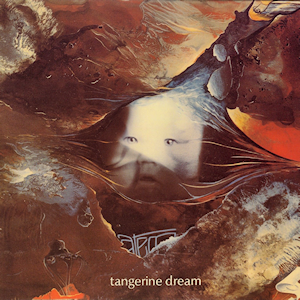
In ~November 1992 I accessed Atem through my friend Mike Lindley. He played it through to me and embarrassed me a bit by pointing out at one point a fizz of white noises sounded like someone having a shower (he was right, it did). The album kicks off with thunderous drumming and organwork which reaches a crescendo before falling away. The rest of the track is a Zeit-like eerie reverie. Splendid stuff! The second track, Fauni Gena, was sort of a Prélude à l’après-midi d’un faune but with actual nature recordings and rather more sinister undertones. “Circulation of Events” is a further droney meditation, while the finale, Wahn, is a short burst of tribal drumming and shouting that brings proceedings to a dramatic close.
Rather strangely Atem became for me a summer soundtrack for the summer of 1992-1993. I feel something more appropriate would have been the Red Hot Chili Peppers’ Bloodsugarsexmagic, but there you go.
Alpha Centauri

It was another year before I found my next classic Tangerine Dream album. Alpha Centauri (1971) predates the group’s wholesale taking up of synthesisers. There’s still rather too much flute action and listless rock jamming, but the band has least ascended into outer space, and the album is mor deliberate than its predecessor, Electronic Meditation. All up it’s a transitional album: not quite top tier but still a lot of fun.
Rubycon

Rubycon was Tangerine Dream’s followup to Phaedra, featuring two long sides of lushly produced sequencer-propelled astral travel. It’s a prototype for what is called (rather pompously to my mind) the ‘Berlin School’ style, popularised more by former Tangerine Dream member Klaus Schulze and Manuel Gottsching, Schulze’s bandmate in another great German band, Ash Ra Tempel.
When I first listened to Rubycon (parts 1 and 2) on my 20th birthday in 1995, I found the album a disappointing. The two sides have largely identical structures, and I found that sameness a little flat compared to the variety of tracks on Atem and Phaedra. Over time I’ve come to appreciate the album more, but I would say it’s the weakest of the ‘72 - ‘75 albums.
Stratosfear
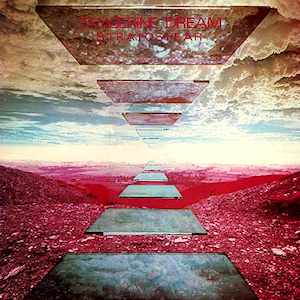
1976’s Stratosfear marked a stylistic change into what I dismiss as “synth prog”. Gone were the ambiguous drone washes and bloopy bits, and in came focused arrangements and guitar. Stratosfear acts as a kind of bookend in that it was with this album that “classic” Tangerine Dream abruptly ended.
Thru Metamorphic Rock
Late one night in ‘93 I happened to be listening to my local student radio station and heard some groovy sounding ambientish music. Being a bit tired I decided to go to bed, but tape recorded the next 60 minutes so I could listen later. When I listened back the next day I heard a selection of interesting world music piece, followed by this one dramatic synth rock track. It began with a whooshing, skittering noise rhythm, soon followed by a propulsive, emphatic sequencer burble which cascaded urgently for about ten minutes. I thought “wow, this is great”.
The DJ didn’t announce what the track’s name was - it’s possible they had fallen asleep at the mixer - so I had no idea at the time what the music was and who it was by. I guessed it was contemporary, not really knowing what contemporary sounded like. Thereafter I’d play the recording back every so often, wondering whether I’d ever find out who made it.
Perhaps a year later, I stayed up late one night to watch Michael Mann’s Thief solely because I read it had a Tangerine Dream score. About halfway through I was astonished to hear the track I’d recorded off the radio, playing during a tense scene where safe-cracker James Caan is racing against time to break into a bank vault. I was astonished. Of course this track was by Tangerine Dream! How could I not have recognised it as Tangerine Dream straight away!?
The track’s very apt name is Thru Metamorphic Rock, and it originally appeared on the band’s 1979 Force Majeure album. The rest of the record is sort of synthy prog rock so the sequencer fury of the track proper is something of an outlier, hearking back to the Phaedra/Rubycon era. I include it here as being (stylistically and spiritually at least) part of the Classic Period.
Green Desert
Green Desert is an album released in 1986, based on tapes originally recorded in 1973 between the time of Atem and Phaedra. So is this album “classic”?
The answer is yes and no. The title track features a brooding synth drone, baleful mellotrons, and prowling drumming, which feels about right, but there’s also extensive Froese guitar licks, and the production quality is very clean and 80s. The rest of the album tracks are pleasant, but don’t bear any recognisable relationship to anything from the prior to 1976.
I’m reasonably certain that even if what’s heard is based on the original ideas behind Green Desert, the final product is distinct. I’d love to hear the originals; maybe they still exist?? Even so, I think the track Green Desert can still be considered classic, in the same way I consider Thru Metamorphic Rock to be: the spirit is there, even if the sound and style is a bit divergent.
Who the band were
I’ve rambled on about Tangerine Dream’s albums without really going into who they were and their historical context. Wikipedia will do a better job, but here also is my take.
Tangerine Dream were part of a wider movement of experimental German rock in the late 60s and early 70s, designated in UK English wiht the slightly perjorative (if memorable) term “Krautrock”. The Krautrock groups were influenced by a heady combination of Anglo-American psychedelic rock and the European avant-garde, but eventually developed their own original voices and a music that is both highly varied yet (to my thinking at least) imbued with a remarkably consistent spirit.
The early Tangerine Dream sound (Electronic Meditation and Alpha Centauri being the best examples) seem heavily influenced by Pink Floyd, and this influence persisted (if in a more subdued way) in Tangerine Dream’s classic albums. (I find Tangerine Dream to be much more interesting than Pink Floyd, or rather they’re the truly cosmic group Pink Floyd could have been, had ego and money not left the Floyd’s members stuck cranking out miserable middle class blues.)
Tangerine Dream’s second album, Alpha Centauri, was still identifiably rock, but the focus had changed to the cosmic, and you can hear hints of the sound to come. By 1972 and Zeit, all rock instrumentation had been dispensed with (save for some unconventional and sparingly used guitar) and the album’s sound was primarily built from long organ drones and synth wobbles. Double albums were a bit of early 70s prog indulgence, but I think Zeit was a statement that genuinely needed the extra run time. Given what had gone before, it was an audacious change of direction.
Atem was a return to more structured sound (and the return of drumming, if more tribal than rock), but Zeit had indelibly changed the group’s trajectory. Atem is a more straightforward album than Zeit, but still a world removed from Alpha Centauri. Both albums are equally good, in my view, but I would say Atem is perhaps a little more assured.
After many years operating in relative obscurity in the German underground scene, Tangerine Dream found success in the UK after being championed by influential DJ John Peel, who rated Atem his album of the year for 1973. Richard Branson signed them to his label Virgin Records, and, with improved studio access and a bigger range of equipment the band produced Phaedra, which gave the group a genuine hit (it reached number 15 in the UK album charts, which is a credit to the sonic open-mindedness of the music-buying public of the time). Successful European and (crucially) American tours followed. Tangerine Dream began composing Hollywood film soundtracks, starting with William Friedkin’s Sorcerer in 1977. Meanwhile, the group adapted to changes in technology and taste in the 1980s by templating a crystalline, new-Age-friendly musical style. Though the group’s commercial heyday was in the mid to late 1970s, they’ve remained a going concern into the 21st century, and beyond Edgar Froese’s death in 2015.
Later archaeological discoveries
Back to my personal history with Tangerine Dream. After my early to mid 90s exploration of the group, there was a long period where I didn’t find any new material. More recently, however, I’ve periodically found more artefacts from the group’s classic period.
Tangerine Tree (and leaves)
In the early 2000s many bootleggish recordings of Tangerine Dream concerts were collected and released gratis (with the band’s blessing). This project, called Tangerine Tree more reliably documents the band’s late 70s to 2000s era, but there are a handful of recordings from the classic period:
- A pre-Zeit concert in Frankfurt (1971)
- Some feline groaning in Ossiach (1971)
- Vampira soundtrack (1971) - not a concert but the soundtrack to a vampire TV movie. Sounds like a dry-run for Zeit and therefore feels more H.P. Lovecraft than Bela Lugosi.
- The “Klangwald?” performance? (1972)
- Saint Ouen (1973)
- Berlin (1973)
So what’s the pull of these gig recordings? Well, during this period Tangerine Dream’s music of the time was completely improvised, and each concert is relatively unique. At times you can hear elements of albums of the time (snatches of Zeit or Atem), but these recordings feel like wholly separate works. (The closest analogue I can think of is when Mozart or Beethoven reuse themes.) Better still, the artistic quality - if not the recording fidelity - is high, so these documents represent a significant expansion of Tangerine Dream’s recorded work. In 1995 I believed I had heard everything of Tangerine Dream that was relevant to me, so discovering the Tangerine Tree exapanded the world of the Classic Period considerably.
Edgar’s solo albums
In addition to Tangerine Tree, there’s also Edgar Froese’s three mid-70s solo albums, which further expand the classic Tangerine Dream corpus.
Aqua

Froese’s first solo album is 1974’s Aqua. I’d been aware of this record since the mid 90s, but didn’t take the time to check it out until 2010. I don’t know why I was so incurious about hearing it, but not seeking the album out was a mistake, as it’s a very solid collection. The first side contains the the swirly, enigmatic title track. Flipping over the disc, there’s the warm, robust, hypnotic burbles of the Berlin-soundy Panorphelia. After the suitably galactic NGC 891, the album is concluded with the pulsing Upland.
Aqua was recorded roughly around the time of Phaedra, which I find fascinating because the album has nothing of Phaedra’s bleak intensity.
Epsilon in Malaysian Pale

1975’s Epsilon in Malaysian Pale contains two side-spanning tracks: the eponymous track and Maroubra Bay. This format is strikingly similar to Rubycon, which was released in the same year. But the albums differ in two respects: the arrangement and production of Epsilon in Malaysian Pale is more rudimentary. It’s tempting to wonder if the album was a sketch for Rubycon, or at very least a template the group followed when they needed to cobble together another release in short (I’ll explain this in more detail later).
The second difference is that despite Rubycon being considerably more polished, Epsilon in Malaysian Pale feels more emotionally dynamic and substantial, especially Maroubra Bay. Rubycon feels like motion, but the destination doesn’t feel much different than the starting point. This is a bit of a paradox, because Epsilon in Malaysian Pale is I don’t know exactly which album was recorded first, but Epsilon in Malaysian Pale feels like a sketch for Rubycon. If so, the sketch turned out better than the finished product.
Epsilon in Malaysian Pale was championed by no less than David Bowie, for whom the as being the soundtrack to his time in Berlin in the late 1970s, and I think the album’s cathartic mood maps well to Bowie’s Berlin rehabilitation after years of drug abuse and rock’n’roll chaos. (Supplemental factoid: Edgar Froese helped Bowie find a flat in Berlin).
Macula Transfer and Stuntman
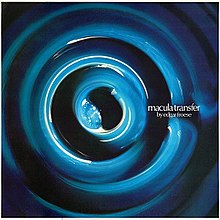

Froese’s 1976 album Macula Transfer is also worth checking out. It’s not as accomplished as Aqua or Epsilon in Malaysian Pale, and it’s slightly transitional, but it retains enough of the classic sound to be considered part of what I might call the “supporting” canon.
There’s one other Froese composition of interest: the title track from his 1979 album Stuntman. By this stage Froese had switched to a formal (as in structured), commercially-oriented style almost diametrically opposed to the freeform explorations of Zeit and Atem. But Stuntman’s title track is a winningly cheerful burble that is both sooo 70s but also from the glorious future that never was. (Oddly, I first heard the Stuntman track all the way back in 1987 when it was used as the theme music to the BBC Science Magazine radio programme. I didn’t know it was Edgar until 30 years later, but after the Thru Metamorphic Rock episode, I took this discovery more in my stride.)
Froese’s classic era solo works help us measure his contribution to the overall sound of the band. While the production on Aqua and Epsilon in Malaysian Pale is more stripped back, the mood is sufficiently similar to Tangerine Dream to suggest (in the absence of solo material from Franke and Baumann during the period) that Froese was the prime creative force in the group.
Oedipus Tyrannus
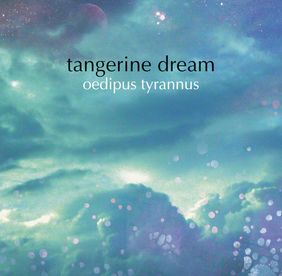
Finally, there’s a lost Tangerine Dream album: in 1974 the group recorded music for a performance of Sophocles’ Oedipus Rex at the Chichester Festival. The 70 minute suite was originally intended to be released as an album, but was shelved. Some parts got circulated in bootleg format, and some was incorporated into Rubycon, but the music didn’t get a full release until 2019.
Listening to Oedipus Tyrannus is absolutely fascinating. The first track, Overture, contains elements hearkening back to Zeit, while “Act 1” and “Act 2: Battle” are more reminiscent of Phaedra. “Act 2: Baroque” simultaneously hints forward to Stratosfear and back to Atem. “Act 2: Zeus” is a throwback to Zeit again. The beginning of “Act 3” was used for the conclusion of Rubycon part 2, and later there’s some furious sequencer clatter (with resonant squelch reminiscent of acid house!).
So what to make of all that? As background misery for a Greek tragedy the music makes perfect sense, and there are plenty of great moments, but it just doesn’t quite make sense as an album.
With all that said, Oedipus Tyrannus remains intriguing for being a stylistic compendium Tangerine Dream’s work to that point, without having a distinct identity of its own. Despite that it’s still good to have it. It’s also easier to see now why the group underwent an abrupt style change with Stratosfear. Oedipus Tyrannus suggests the group had gone as far as they could go with their classic sound, and it was time to try something new.
What do I get out of Tangerine Dream?
This is a personal outline of why Tangerine Dream means so much to me. I should say at the outset that is my subjective viewpoint, and I don’t even expect hardcore Tangerine Dream fans to necessarily agree with me.
So to my mind classic period Tangerine Dream is the intersection of the following phenomena:
- Sonic open-mindedness steeped in 1960s German avant-garde
- Psychedelia
- A strong desire to explore the sublime
Point 1. we’ve already discussed. Point 2. is almost too obvious to mention, but I will point out that while I’ve never used psychedelics and wouldn’t dare presume to understand what it’s like to consume them, I do get a sense that Tangerine Dream’s classic era music is the result of some profound psychonautical experiences.
As for point 3., Tangerine Dream’s music evokes moods of grandeur and horror, which lines up well with the Romantic conception of the Sublime.
Classic Tangerine Dream is for me a companion for life. Much of that is perhaps tied to being 17 when I first heard them, but I feel the singular feature of the band is that they meant every note of what they did, not in adolescent, U2ish sort of way, but more like, I dunno, the Mercury 7. I can’t know precisely what Tangerine Dream were really about, but what I think their classic period was about is totally compelling. It’s waves thundering on a shore for a billion years, it’s the minute or so of the totality of an eclipse, it’s mountains rising and earthquakes toppling them down. It’s the formation of black holes and their eventual evaporation quadrillions of years hence.
I’ve spoken about religious devotion to Tangerine Dream, and that’s a bit of exaggeration for comic effect, but they are a group I take more seriously than any other.
Legacy
Aside from their 1970s heyday Tangerine Dream have never been in vogue with the cogniscenti, mostly because the cogniscenti are increasingly less interested (or too terrified) to confront the cosmic drama that Tangerine Dream laid out. Of electronic music movements that have come since Phaedra, synthpop was pop, house and techno were about love and dancing, Ambient was more about tranquility and transcendence, IDM about a sort of digital nihilism, glitch was about glitch, and synthwave was about… actually I really don’t understand synthwave at all. By contrast the other two truly great Krautrock bands, Can, and Kraftwerk, have attained a measure of perpetual veneration. I suspect the difference is that Can were a rock group, and rock is still a thing despite being essentially complete in the 1990s, while Kraftwerk are lauded as a sort of tuneful Gilbert and George. I don’t begrudge these groups their recognition - they deserve it - but I don’t think Tangerine Dream is any less eligible.
Having said this I feel duty bound to point out that classic period albums are not without fault. Some of the bloops and bleeps are now dated and perhaps even quaint, and all of Tangerine Dream’s early albums were comparatively low-fi; Rubycon was the first to avoid loudness clipping, hiss on the master tape, obvious tape edits, or, in Zeit’s case, the sound of a creaking chair caught on microphone multiple times. I don’t find any of these features particularly detrimental, but younger listeners may be confounded.
Stylistically there are other problems: Zeit clearly has some debts to Ligeti (and Kubrick, for that matter). There’s also the lingering Pink Floyd influence, and the group’s willingness to push the boundaries of rock made them sufficiently Proj-adjacent to put them on the ideological outer with punk, new wave, synthpop, and indie bands. The 90’s ambient revival did swing back, with the old synth sequence returning to fashion, but TD itself was less in favour than acts that had been inspired by the general 70s synth sound, like The Orb.
If Tangerine Dream are not in vogue, there has nonetheless been a revival in Tangerine Dreamish things. The recent craze for DIY modular synthesizers represents a return to 1970s synth technology. (And it’s questionable though whether the resulting music represents any advance on what Tangerine Dream and other groups achieved 50 years ago.) More directly, Tangerine Dream’s work has been used in media like Grand Theft Auto and Stranger Things. Admittedly this influence is more from the group’s 1980s work, and with media being something of a blizzard these days, it’s hard to know whether these flickers of interest represent perpetuation of an enduring legacy, or just sparks from a dying ember. I do hope Tangerine Dream are not forgotten, however as I think they were one of the most true musical artists of the late 20th century.